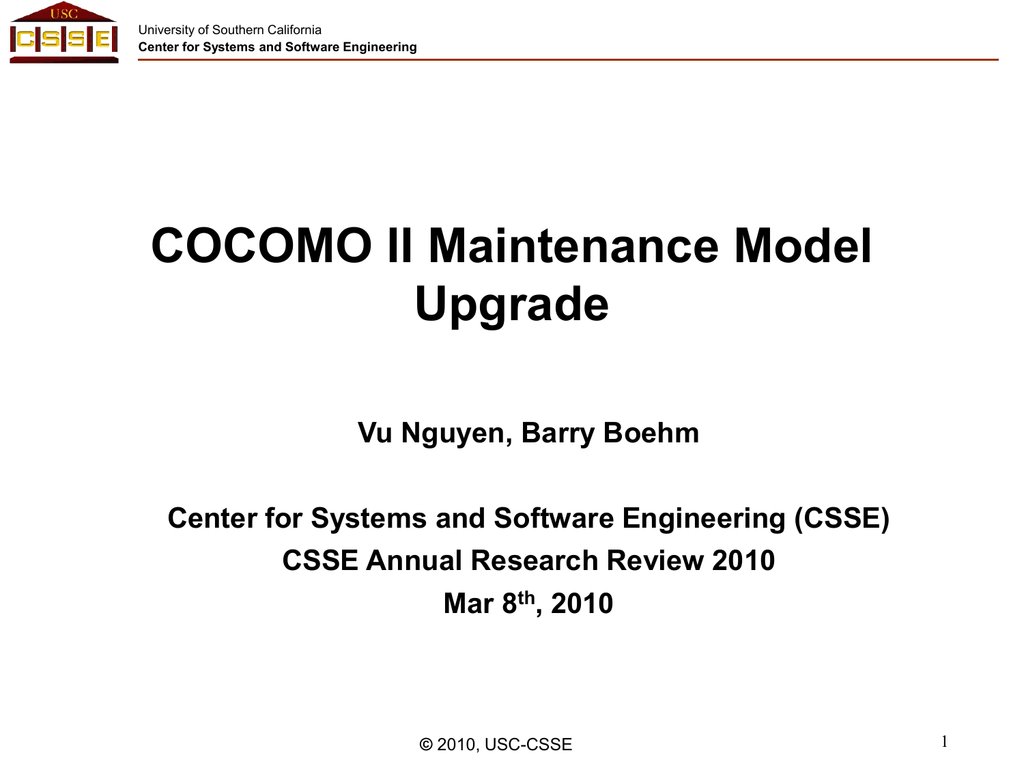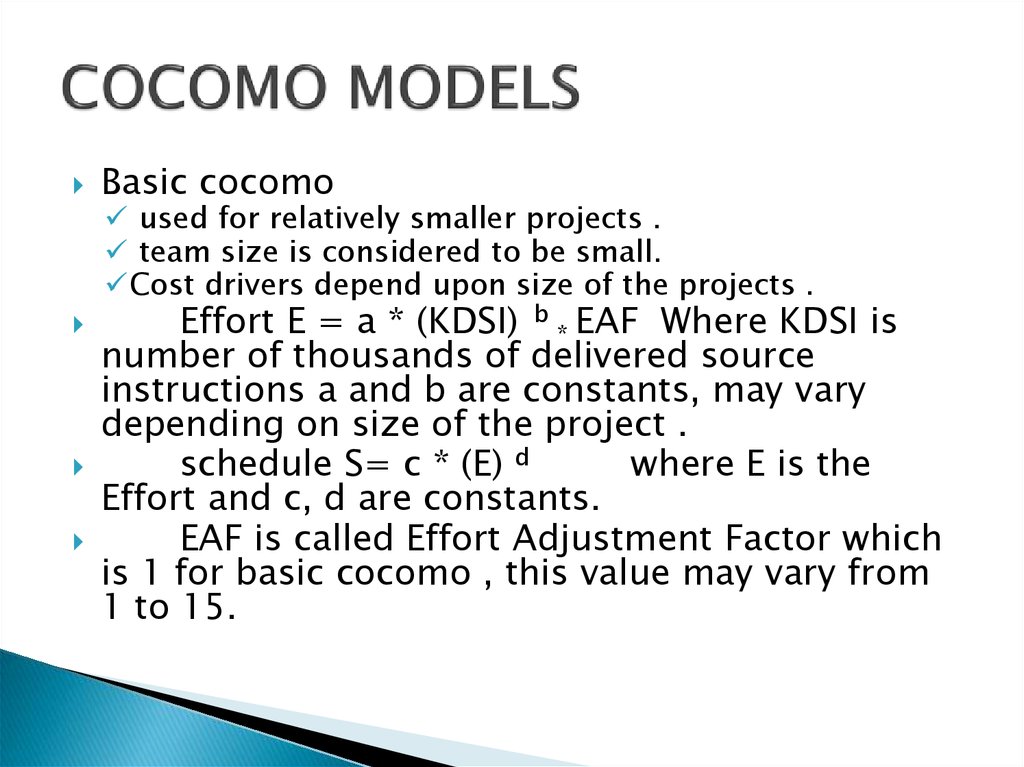

- #SOFTWARE ENGINEERING COCOMO MODEL DRIVERS#
- #SOFTWARE ENGINEERING COCOMO MODEL SOFTWARE#
- #SOFTWARE ENGINEERING COCOMO MODEL CODE#
You will then be taken to the results page, so that you can, if desired, If you enter anything other than a number, you will be shown a prompt To see your result, simply hit the "calculateĬOCOMO" button. INSTRUCTIONS: Choose a mode for your project based on the criteria aboveīy selecting a corresponding radio button. In Robert Pressman's "Software Engineering, A Practitioner's Approach",
#SOFTWARE ENGINEERING COCOMO MODEL SOFTWARE#
This application derives the COCOMO software engineering metric as found New (Values are probably wrong) VL L N H VH XH Note that the buttons below can be clicked for more (popup) information. Hardware, software and operation constraints. In which teams with mixed experience levels must meet a mix of rigid and less thanĪ software project that must be developed within a set of tight With good application experience work to a set of less than rigid requirements.Īn intermediate, (in size and complexity), software project Relatively small, simple software projects in which small teams Q.72 Estimation of software development effort for organic software is COCOMO is. Otherwise, it will cause problems trying to use any button. You need to have a Javascript enabled browser to use this web page.

The project should save the results of this COCOMO calculation if needed to support its make or buy decision.

If you have any questions about this form, please send email The Constructive Cost Model (COCOMO) computation is used to estimate the level of effort needed to produce a given quantity of code. Typical numbers for time are 30% requirements, 30% design, 15% code, and 25% integration and testing.This form must be completed in one session. Time is more heavily tilted toward requirements analysis and design, but specifics depend on the process being used.
#SOFTWARE ENGINEERING COCOMO MODEL CODE#
If you add 20% to the total for requirements analysis, it becomes 17% requirements analysis, 25% design, 25% code and unit testing, and 33% integration and testing. Management (it does include line management but not overall management) īoehm originally divided effort as 30% design, 30% code and unit testing, and 40% integration and testing. As shown in Figure 11-11, an increase of 20% is generally needed for the requirements phase-even more when object-oriented methods are in use. Even though this portion of the estimate is commonly viewed as the responsibility of a systems engineering or systems analysis function, it is often underscoped unless software engineers are invited to participate in the cost estimate. Requirements development and specification, which is often not used in some commercial applications. ® COCOMO assumes a basic waterfall process model: 30% design, 30% coding, and 40% integration and testing. ® Your data may not match the data used to develop COCOMO-if not, your company must collect the data needed to correlate the model. It can take two to four times this much with modern software engineering practices and typical complexity of modern software products. ® COCOMO assumes a very basic level of effort for configuration management and quality assurance, allowing about 5% of the total budget for both (based on typical commercial practice at the time COCOMO was established). These activities may also be estimated using a variation of the basic model. Maintenance, rework, porting, and reuse are issues that don't fit cleanly into the same model. ® The COCOMO model primarily represents development effort (from the planning phase through the implementation phase).
#SOFTWARE ENGINEERING COCOMO MODEL DRIVERS#
® It is dependent on the knowledge of cost drivers and/or the amount of time spent in each phase. ® Experience-based estimation may be flawed because of obsolescence of the historical data used or because the estimators' memory of past projects is flawed. ® All the levels are dependent on the size estimate-the accuracy of the size drives the accuracy of effort, development time, staffing, and productivity estimates. ® It ignores the software development environment. ® It oversimplifies the impact of security issues. ® It ignores customer attributes-skill, cooperation, knowledge, and responsiveness. ® It ignores documentation and other requirements.

® It ignores requirements volatility (but an organization may add this as an extra adjustment factor in computing EAF).


 0 kommentar(er)
0 kommentar(er)
